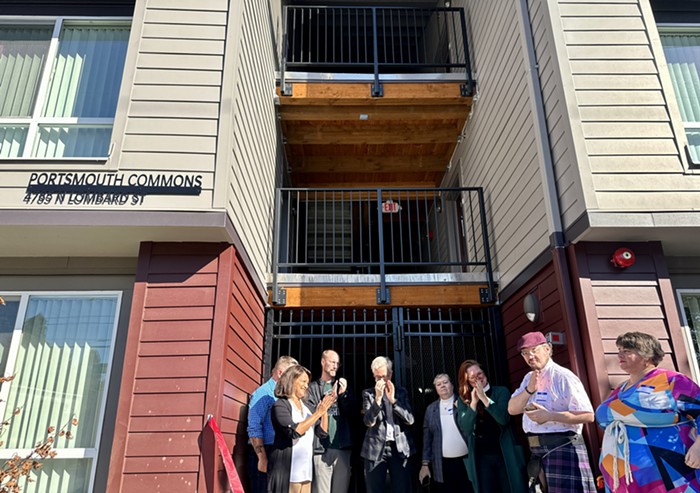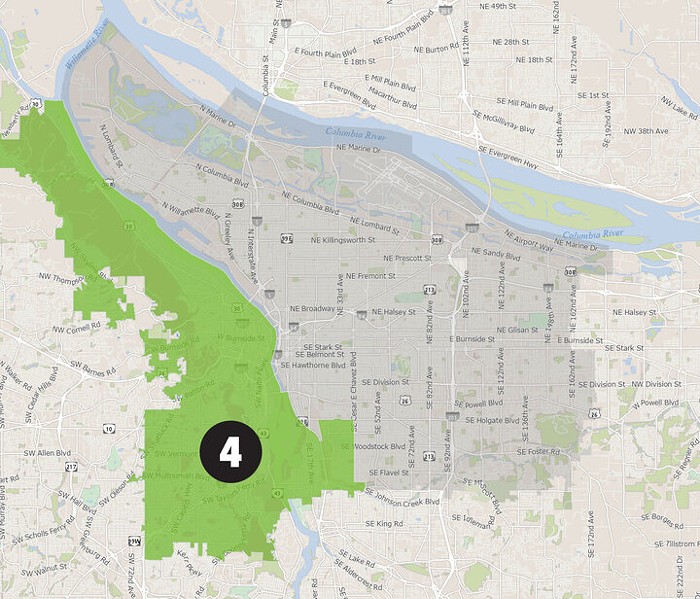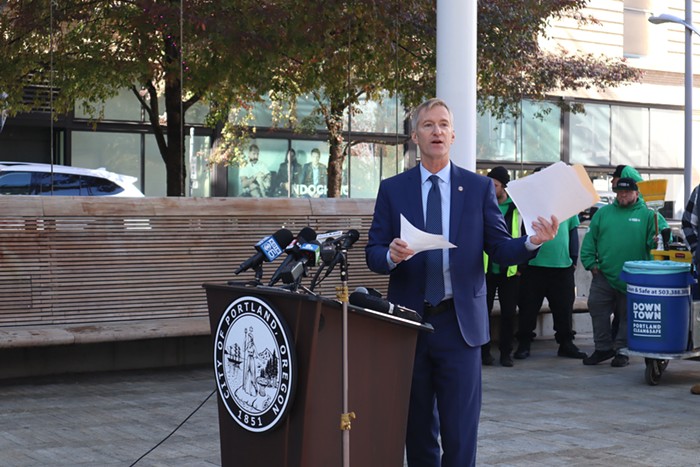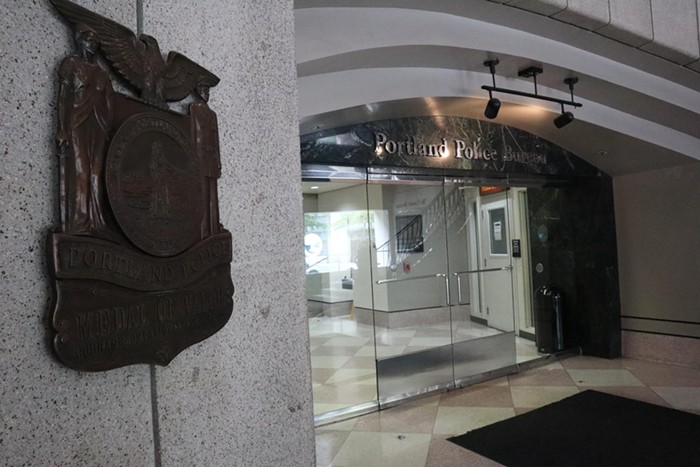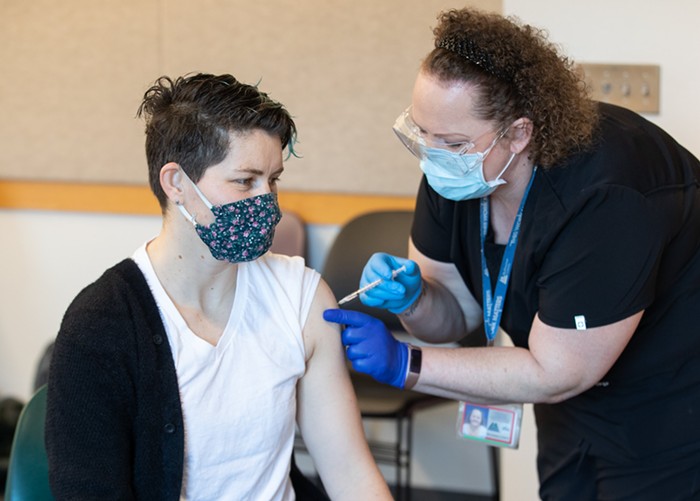
- YouTube.com
"On Thursday, Feb. 11, DEQ requested both companies to voluntarily cease their use of all chromium compounds until further notice," reads a news release from the Oregon Health Authority and Department of Environmental Quality.
The move by Bullseye and its North Portland competitor Uroboros Glass makes the third substance glass factories have elected to forego since air quality concerns about the toxic substances coming out of their furnaces were raised last week. Bullseye had already suspended use of the heavy metals arsenic and cadmium, both carcinogens, the company said. Uroboros suspended the use of cadmium, saying it doesn't use arsenic.
Both those substances are known carcinogens that present other health dangers. Chromium is a little different. The material, which, as we've noted, showed up in high levels in the air around Bullseye last October, can come in two forms. Chromium III isn't much of a risk. Chromium VI is much more concerning, with relatively low levels in the air meeting risk-based concentrations DEQ sets.
That risk-based concentration is .15 nanograms per cubic meter in air for chromium VI. DEQ air testing last year found average chromium levels of 71.5 nanograms per cubic meter over the course of a month, but didn't differentiate between the two types.
Here's how the press release describes the difference:
"There are two types of chromium: chromium 3 (trivalent chromium) and chromium 6 (hexavalent chromium). Chromium 3 is the most common form and is an essential nutrient found in our bodies (and urine). Chromium 6 is less common but much more toxic. Inhaling chromium 6 at very high levels can cause acute respiratory and skin irritation. Chronic, low-level exposure to chromium 6 can increase the risk of certain lung cancers. DEQ does not yet have data regarding the levels of chromium 6 in this case."
It's likely chromium VI was involved in the air readings, OHA officials say. DEQ says a preliminary analysis of data provided by Bullseye and Uroboros "indicated both companies were using compounds containing hexavalent chromium as a raw ingredient."
Nina DeConcini, Northwest regional administrator for DEQ, said the agency asked the glass factories to discontinue use of the compounds yesterday, but didn't secure those commitments until this afternoon. Bullseye has agreed to suspend use of hexavalent chromium, officials say. Uroboros has agreed to suspend using all chromium compounds.
"At the levels we’re talking about here, the most significant risk would be an increased risk of lung cancer," OHA toxicologist David Farrer said at a news conference today, discussing the health risks around Bullseye. "It sort of adds to the risk of arsenic and cadmium."
As expected, the recent uproar in Portland is having statewide repurcussions. DEQ now says it's creating a list of facilities around the state that are allowed to emit chromium compounds, and "researching other facilities that may be using chromium compounds that are not otherwise regulated for use."
The concerns over chromium took such precedence for DEQ and OHA that the agencies have missed a deadline set by Gov. Kate Brown, who asked for a full accounting of the agencies' knowledge of the pollution by close of business today. A DEQ official told reporters the agency would turn in that information over the weekend.
Update, 9:30 pm: Bullseye released a testy statement this evening, and it's another sign of fight from the company, which, remember, refused to stop using all chromium compounds as the state had asked.
The release mentions the DEQ's "inability to provide any direct evidence that Bullseye was a significant source of chromium."
"In fact," it adds, "DEQ’s own monitoring data from October 2015 showed peak levels of chromium on days when Bullseye’s factory was idle."
Bullseye is now openly questioning DEQ's rationale and legal authority, and accusing the agency of bowing to pressure from an Oregonian editorial. Most seriously, it's hinting that it'll have to shut down if the state's demands continue much longer.
"We are concerned that DEQ’s frantic actions could put us out of business and cause 140 people to lose their jobs," Bullseye co-owner Dan Schwoerer said in the release.
Here's this afternoon's press conference.
MORE COVERAGE:
State Finds Alarmingly High Arsenic, Cadmium Levels Near Two SE Portland Schools
Bullseye Glass Has Suspended Use of Arsenic and Cadmium Because of Air Quality Concerns
Portland Public Schools Is Ordering Air Tests Because of Arsenic, Cadmium Concerns: "We Need A Public Meeting"
Soil Near Bullseye Glass Contains Arsenic and Cadmium—And Other Things Officials Told Parents Thursday
Essential Pollution Controls Lacking at Two Glass Plants Blamed For Cadmium Emissions
